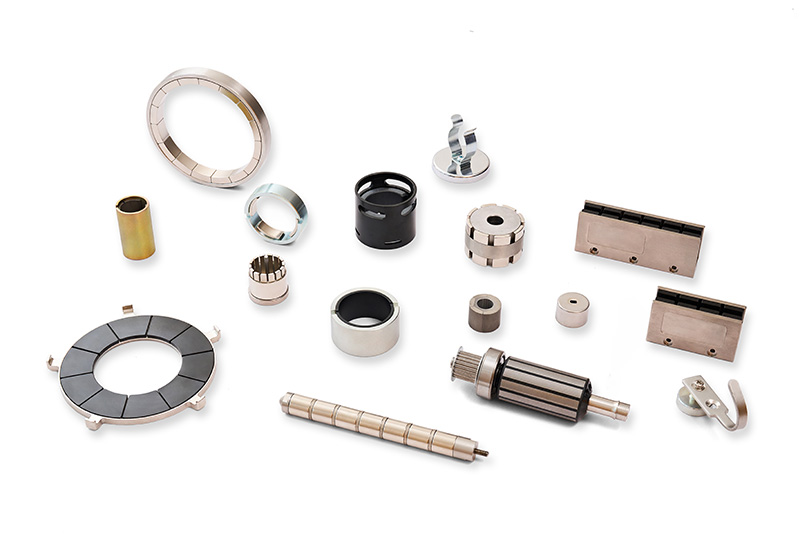
What Are Magnetic Components?
Magnetic components refer to systems that integrate permanent magnets with various components. They enable applications that cannot be achieved by standalone permanent magnets. More specifically, magnetic components are a synchronized combination of suitable magnetic materials, non-magnetic materials, precise positioning, assembly methods, dimensions, tolerances, and field focusing to achieve optimal results.
Advantages of Magnetic Components
-
Enhanced Magnetic Force
Magnetic components typically exhibit higher magnetic field strength due to the presence of magnetic circuits. The flux-conducting elements within them can direct and concentrate the magnetic field to specific areas.
-
Improved Mechanical Strength
The inherent brittleness of neodymium, samarium-cobalt, ferrite, and alnico magnets poses risks in applications. Repeated mechanical impacts can reduce their volume and weaken magnetic force. Non-magnetic enclosures made of ferrous metals, non-ferrous metals, or plastics buffer these magnets from mechanical shocks. Fully encapsulated systems are also available for harsh environments.
-
Application-Specific Functions
Beyond magnetic and mechanical properties, magnetic components are designed to achieve functions unattainable by individual magnets, especially in installation options.
-
Streamlined Collaboration
All components of a magnetic assembly come from a single source, eliminating the need to coordinate, inspect, and inventory multiple sub-components. This reduces tolerance accumulation while saving labor costs and lowering waste rates.